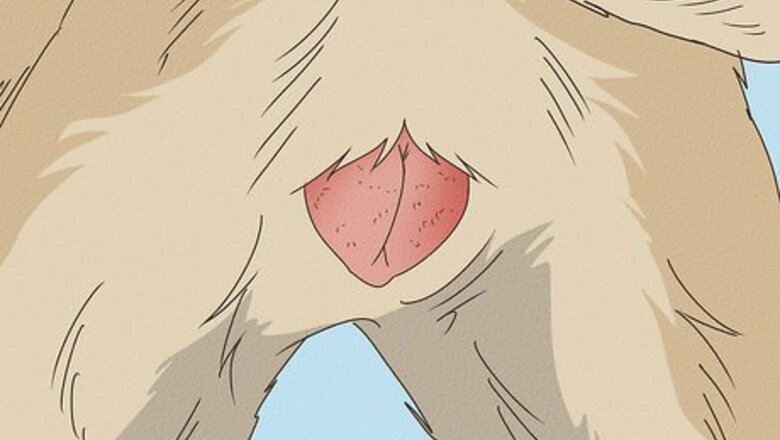
views
- Look for signs that your dog is in heat, like a swollen vulva, vaginal discharge, and frequent urination.
- You may also notice behavioral changes in your dog, like aggressive behavior or an increased interest in male dogs.
- Wait until your dog has gone through 2 to 3 heat cycles before breeding her.
Behavioral and Physical Signs of Heat

Swollen vulva When your female dog is going into heat, her vulva will begin to swell. Her genital area will appear enlarged and protruding outward. The tip of her vulva will move upwards to make it easier for a male dog to penetrate her, and it may look red as well. You can turn your dog over on her stomach to examine her genital area or observe her genital area from behind.
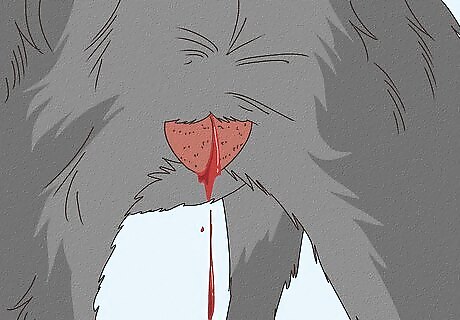
Blood or discharge When your dog is in heat, she will have a bloody discharge for 7 to 10 days, similar to a human’s period. The spotting or discharge may appear deep red, milky pink, or white. Your dog will be fertile around 12 days after she starts bleeding, as it gets thinner and lighter. This is one of the easiest ways to tell if your dog is in heat. You may also notice the blood or discharge has a distinct smell. The strong smell is meant to attract the attention of a male dog. Some female dogs will bleed very heavily when they are in heat, while other dogs will only have minimal bleeding or discharge.
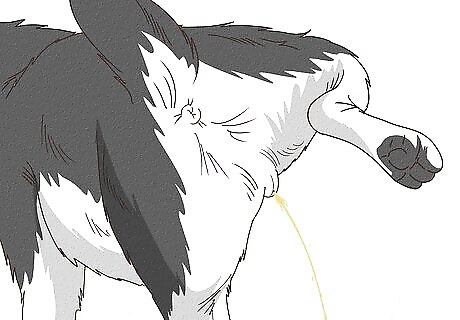
Frequent urination Dogs in heat often pee more than usual. Her urine contains pheromones and hormones, which will help let males know she is interested in mating. You may notice that your female dog wants to be let outside more often to urinate than she usually does. This could be a sign she is experiencing the period in her heat cycle when she is most fertile.
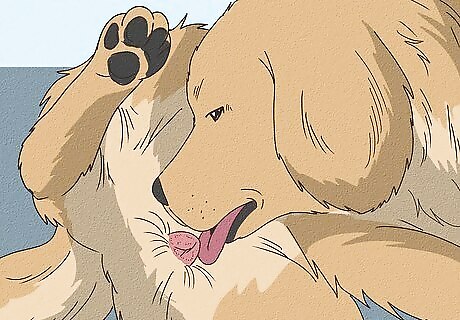
Excessive licking of the genitals Since her vulva is red and swollen, she may be paying attention to it more than usual. Keep an eye on your dog to see if she licks her genital area more often than usual.
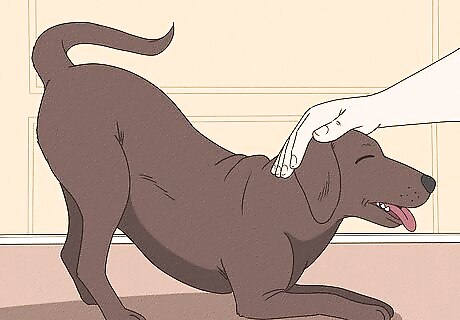
Pushing up her rear when petted on the back Along with physical changes, you might notice that your dog has some behavioral changes, too. When you pet her, she might lift up her rear end toward the sky. You might also notice that she’s holding her tail up and to the side. Both of these behaviors mean she’s in heat and is trying to attract a mate.

Nervous or aggressive behavior Female dogs will often act standoffish or even aggressive during the first phase of their heat cycle. As their heat cycle continues, you might notice that she acts aggressive toward other female dogs, but is welcoming to male dogs. This is because in the wild, dogs had to fight for their mate. Your dog is acting aggressive toward other animals on instinct.
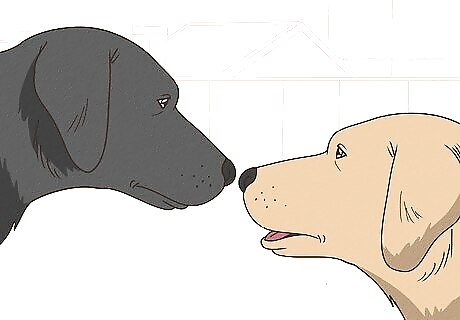
Seeking out male dogs As your dog enters the heat cycle, she may look for male dogs to mate with. Keep an eye on her behavior and note if she’s searching for male dogs or letting them mount her. You might notice that your pup is acting “flirty,” or overly affectionate, with other dogs. If she can’t find any male dogs, she may even mount dogs (or your legs) herself.
Tests and Heat Cycle Tracking

Track your dog’s heat cycle. Female dogs go into heat about twice a year, usually 6 months apart. Track your dog's cycle to determine when she is ovulating (which means she is fertile). Female dogs have 4 different stages in their cycle: proestrus, estrus, diestrus, and anestrus. You may need to track several of your dog’s heat cycles to confirm each stage. Proestrus stage: Starts when the female dog’s vulva begins to swell and starts to spot. It is usually 9 days, but can last from 4 to 20 days. During this stage, your dog may attract males but not accept them for mating. Estrus stage: The period where the female dog can breed. This period usually lasts 9 days, and she is most fertile for the first 5 days of it. She will become more social with males and allow them to mate with her. You'll know the fertile stage is complete when her vagina returns to its normal appearance and she no longer seeks out or accepts mates. Diestrus stage: The end of her heat cycle. She will either return to normal or develop into pregnancy. Anestrus stage: An inactive phase. No changes in behavior or appearance will occur.

Get a vaginal smear done by your vet. You can confirm your dog is in heat by having your vet perform a vaginal smear on your female dog. A vaginal smear is done by examining vaginal cells from your dog under a microscope. It is a non-invasive procedure and does not harm your dog. Your vet will require a sample from your dog and may perform a test on several samples to confirm your dog is in heat. As part of the testing, your vet will look for changes in cells that show your dog is ovulating. The vaginal smear can also determine your dog’s optimal breeding time.

Have a serum progesterone test done on your dog. You can also determine your dog’s ovulation by having your vet do a blood test to measure the progesterone level in your dog’s blood. In order to do this, your vet will draw your dog’s blood several times. Extra samples will help them accurately predict your dog’s ovulation period. This test is considered very accurate for determining the optimal mating time for a female dog. It is an ideal option if your female dog has a history of unsuccessful mating or if you want to be sure the female dog is ready before bringing her to a male dog for mating.
Breeding Your Female Dog
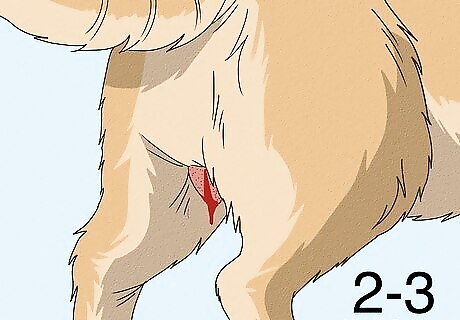
Wait until your dog has had 2 to 3 heat cycles. Most female dogs will go into heat when they’re anywhere from 6 months to 1 year old. However, it’s best for the health of the dog to wait until they’ve had 2 or 3 cycles. Typically, this is when your dog is around 2 years old. Certain dog breeds that are prone to hip dysplasia need to be x-rayed before mating. The x-rays are then sent off to the Orthopedic Foundation for Animals (OFA) to make sure your dog is healthy enough to breed. They will look for signs of hip dysplasia, including the shape of the pelvis and the hip. If you are not sure your dog is mature enough to breed, ask your vet. Your vet should be able to tell you if your female dog is ready for breeding.
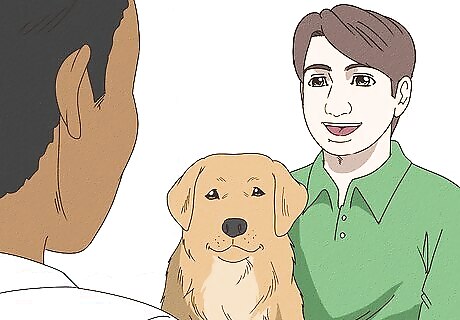
Locate a suitable male dog for breeding. To breed your female dog with a male dog, you will need to find her a suitable mate. Look for a male dog of the same breed who is healthy and has no genetic faults or issues. Meet with the male dog’s owner beforehand or with the breeder and discuss the dog’s health and medical history. You should also confirm the male dog’s age. Most breeds should mate when they are between 1 year to 7 years old. Make sure you talk with your vet before you mate your female dog with a male dog. Your vet will clear your dog of any health issues or problems before you start the breeding process.
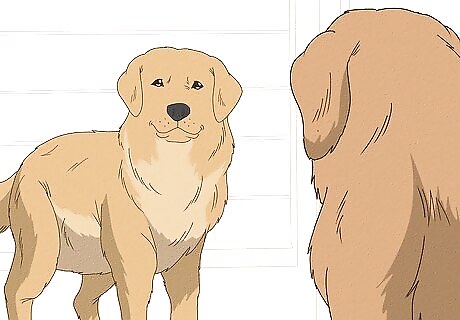
Bring your dog to the male dog when she’s most fertile. Female dogs are ready to breed during the estrus stage of the heat cycle. This is the period after the bloody vaginal discharge, and it typically lasts for around 9 days. Try to set your dogs up to mate during this period so she has the most chance of getting pregnant. Do not mate your dog on her first heat cycle. Wait until she has had one to two heat cycles to mate her. This will ensure she is healthy enough for mating. Arrange for 2 matings between the dogs, 24 or 48 hours apart. This can help to increase the likelihood of your dog getting pregnant.
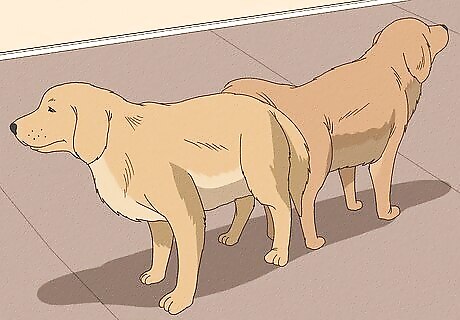
Create a stress-free environment for the breeding. Typically, male dogs do better mating in their own territory, so plan to bring your dog to them. Make sure there’s a space that’s clean and open for breeding, then let the 2 dogs meet each other. If your dog is at the right stage of her cycle, she’ll warm up quickly to the male dog and show signs of attraction. This will encourage the dogs to mate naturally.

















Comments
0 comment